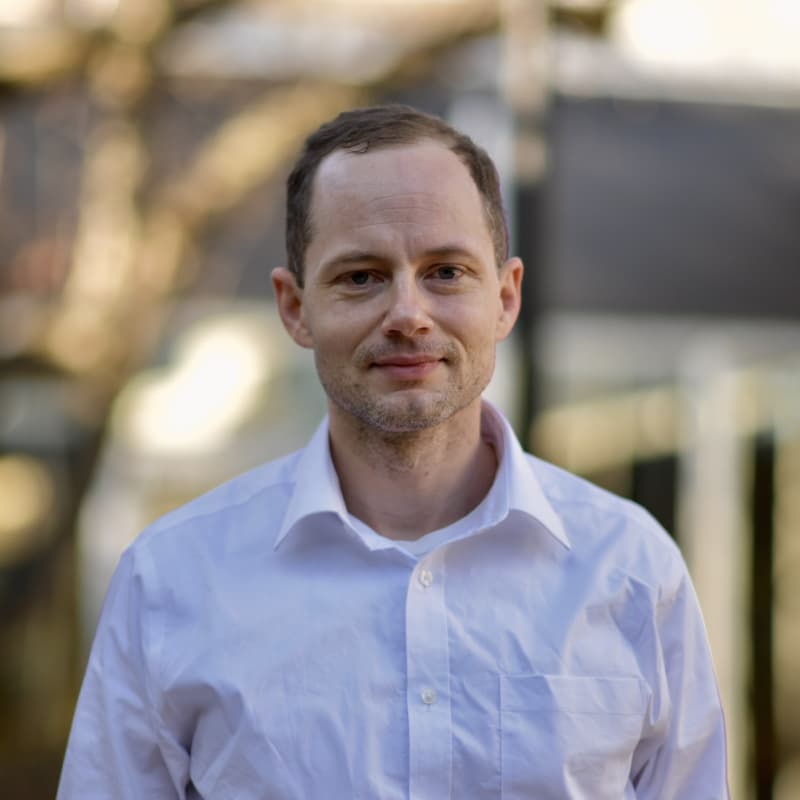3Qs: Dirk Englund on the quantum computing track within 6-5, “Electrical Engineering With Computing”.

Starting in Fall 2024, EECS is launching 6-5, “Electrical Engineering With Computing” as the sole new electrical engineering major. One of the signal changes of the new degree is the organization of upper-level classes into tracks, including an undergraduate engineering sequence in quantum engineering, where students learn the foundations of the quantum computing “stack” before creating their own quantum engineered systems in the lab.
Dirk Englund, Associate Professor in EECS, has been part of a team of instructors developing the quantum course sequence. “Back when I was an undergrad, I actually wanted to do cosmology. I wanted to understand how the universe works,” Englund says. “I went into the laboratory of one of my advisers, who had an atomic physics laboratory, and there on the optics table you could do experiments that looked at very fundamental questions like non-locality that I had thought were reserved for cosmology. That really pulled me in. So now I’m actually doing quantum information science in an electrical engineering and computer science department! We’re training the next generation of engineers because, after decades of work by different groups, we’re actually at the point where some of these technologies are getting deployed into the real world.” Those technologies range from quantum computers to quantum communications equipment to quantum sensors, all of which harness the surprising and bizarre principles of quantum mechanics, such as entanglement and non-locality of physics, to break new technological ground.
Englund sat down with us to share more about the new quantum curriculum within electrical engineering.
What’s important–and what excites you–about this quantum track?
Because basically every technology is ultimately limited by the rules of quantum mechanics, our students are going to have to become familiar with (and comfortable with working at) the limits of technology, which increasingly are hitting the limits of quantum mechanics.
We think it’s imperative that we have a rigorous course offering for our students, and that’s what we’re doing. In the fall semester, I joined my colleagues Karl Berggren and Kevin O’Brien to do the lecture portion of 6.2400, “Introduction to Quantum Systems Engineering”. Now, in spring, is the portion in which the students put what we learned into practice here in the laboratory.
People come at this course from different angles; some people excel in the algorithms part, or physics, or in electrical engineering, and so when our projects form, you have a diversity of experiences and backgrounds to make a team that can do things that none of the individuals could pull off. That creates a lot of learning between the teams–and it’s exciting for us instructors as well.
How will 6-5 “Electrical Engineering With Computing” prepare students for careers in quantum engineering?
The interesting thing about quantum information science and technology is that you need to have an interdisciplinary view. It combines information theory and algorithms as well as electrical engineering and physics. You can’t really understand how quantum computers work without understanding the algorithms, and you can’t understand the algorithms without understanding the physics, because the two of them are still so closely connected.
To be effective, you have to know multiple disciplines.
How does this class fit into the broader EE quantum engineering track?
I’ve said before that the three pillars of quantum information science and technology are: new forms of computing; new forms of networking (or the Quantum Internet), and sensing.
For each of these pillars, we have one or multiple labs that give students hands-on experience in these emerging fields. It’s quite unique; I am not aware of another offering of this kind anywhere within the US and probably even beyond. We’ve been able to bring together the resources thanks to strong support for the initiative from both the Department of EECS, but also from companies like Q Tools that have provided very significant financial and instrument support to make this class possible.
Essentially, right now we’re developing the elementary building blocks of the next generation of technologies. What’s unique is that we’re getting our students to interact with the transistors and the elementary building blocks of, arguably, the revolutionary technologies of the 21st century.
Media Inquiries
Journalists seeking information about EECS, or interviews with EECS faculty members, should email eecs-communications@mit.edu.
Please note: The EECS Communications Office only handles media inquiries related to MIT’s Department of Electrical Engineering & Computer Science. Please visit other school, department, laboratory, or center websites to locate their dedicated media-relations teams.